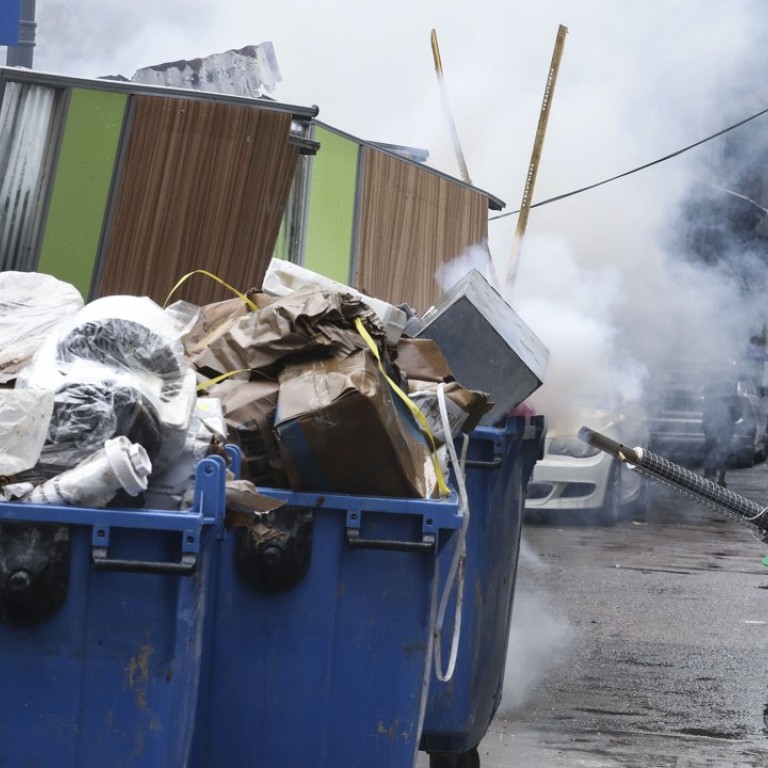
Macau clean-up operation after deadly storm will still take days
Rubbish collection workers estimate it will take at least a week to clear the streets after Typhoon Hato caused chaos on the city last week
An official said the government was dealing with a “second wave of rubbish” as many homes only regained electricity over the weekend. Workers on the ground told the South China Morning Post that it could take at least a week to handle the volume of waste.
Leong Kam Un, 60, a rubbish collector for 20 years, said he had never handled so much rubbish.
Since Wednesday, Leong has worked an average of 18 hours a day to clean up the mess left by deadly Hato. “When a typhoon comes, there is always more trash. But this time was much worse. I never saw the city like this,” he said.
Eight routes to better typhoon management in Macau, as Pakhar response reveals crisis lessons learnt from Hato
Leong and his two colleagues are among more than 600 workers on the ground, whose job is currently the hardest and perhaps the most important for a city recovering from a typhoon that claimed 10 lives and left more than 240 injured.
Authorities have asked residents not to dispose of their belongings in the streets and instead use 40 rubbish collection points set up after the worst storm in the city for half a century.
When workers stop at the rubbish collection points, they first empty the big containers and then start diligently picking up debris scattered in the streets by hand. The fact that a lot of the rubbish is not inside containers or plastic bags makes their mission even more daunting.
“We are facing many challenges, but there are two major factors that make this harder: the traffic, because it’s difficult to drive, and the rubbish thrown out in the streets is simply too much,” Leong’s colleague Lee Kam-un, 45, said.
A truck full of rubbish might take about two hours to drop the waste at the incinerator and return to the city, and the amount of rubbish they need to carry is two to three times more than normal – usually 700 tonnes a day, according to official data.
Both Leong and Lee estimated it could take at least a week to finish the task and get back to normal.
“We are now dealing with a second wave of rubbish, because some buildings only got electricity in the past two days and people are now starting to dispose of things like meat than went bad in their fridges,” José Tavares, president of the Civic and Municipal Affairs Bureau told the Post on Monday.
“We collect trash now and after two hours the same spot might be already full of trash,” he said.
About 7,200 tones of rubbish were collected between August 24 and August 26. On Sunday alone, the day Macau was hit by another tropical storm, almost 1,800 tonnes of trash were removed from the streets, and 850 tonnes between 8am and midnight on Monday.
Tavares said authorities were also facing challenges disposing of the waste. “The incinerator does not have capacity to process everything, so we have to dispose of the rubbish elsewhere and disinfect it to avoid an outbreak of disease,” he said.
Insulting or indispensable? PLA presence in Macau for Typhoon Hato clean-up welcomed by most, but not all
Tavares said Macau had 50 rubbish trucks on the road and that on Sunday they received 10 more from Guangdong province. He also noted that construction companies have lent dozens of trucks and workers to help with the collection.
“The situation is more under control, but it will take days to resume normality,” Tavares said.
The world’s largest gambling destination is also recovering from the power blackout caused by Typhoon Hato on Wednesday. Thousands of homes were without electricity and water in the days following the storm.
A representative of Macau’s power provider, Companhia de Electricidade de Macau (CEM), said electricity had been fully restored across the city, except in buildings where infrastructure was damaged. “The connection is now stable and we are providing technical assistance to some individual customers,” said Jaclyn Iun, CEM regulatory affairs and corporate communications office manager.
Iun told the Post that most progress in the flooded areas was made on Sunday night. “The full recovery happened between Sunday at midnight and Monday morning,” she said.
A spokeswoman for Macao Water said that the production capacity of the city’s three water plants had reached normal levels. “Macao Water is doing on-site inspections in some areas where the water supply is not fully restored due to problems with the water supply systems of some buildings,” she said.
About 25 buildings did not have water on Monday.
Meanwhile, the government announced that a commission has been set up to revise the city’s crisis response, after authorities were slammed for their poor response to deadly Typhoon Hato.

